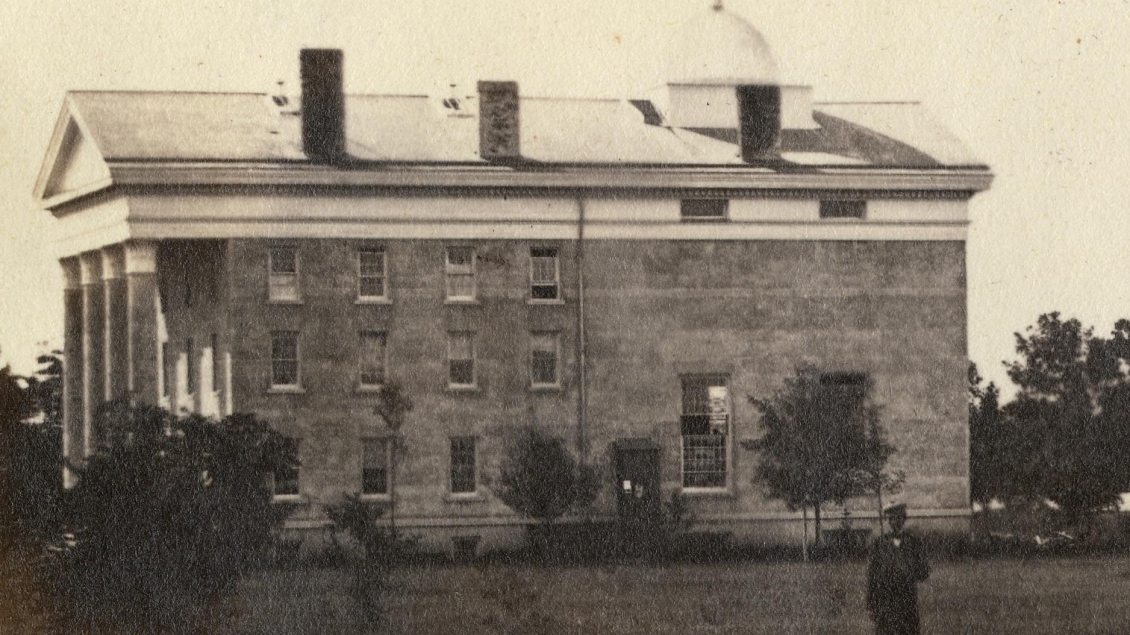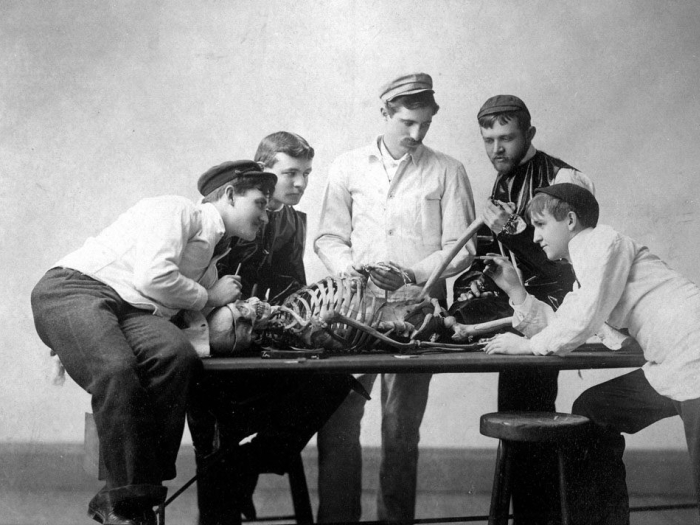Boldly advancing academic medicine for 175 years

On an October day in 1850, the first U-M Medical School students and faculty passed through the grand columns at the entrance of their just-completed classroom building, on what we now know as the Diag.
That moment marked the launch of what has become one of the world’s leading academic medical centers, devoted to biomedical education, research, care and service.
Today, as we celebrate 175 years of shaping medical and scientific leaders, advancing discovery and innovation, and caring for the people of Michigan and beyond, we honor a legacy that positions us for a bold, impactful future. We also mark the 100th anniversary of the opening of “Old Main” -- the University Hospital where our teams served countless patients from 1925 to 1986.
This short overview of the school's history includes some of its early "firsts" - including the first university-owned hospital in the U.S., the first effort to train men and women to be physicians in the same classrooms, the first hands-on clinical training rotations for medical students and more.
Pioneers in Medical Education and Patient Care
From the beginning, we stood out in American medicine for being part of a broader university, with physicians as full members of the faculty. By 1869, we had the nation’s first university-owned hospital. Our commitment to a rigorous, science-based curriculum transformed students from passive listeners to active participants through laboratory experiences and the first clerkships.
Leading in Research and Service to Society
From early investigations in chemistry and infectious diseases, to some of the first departments and centers in the nation devoted to pharmacology, human genetics, biochemistry, mental health, radiology and more, we have led the way in advancing knowledge and using evidence to improve human health.
Breaking Barriers in Inclusivity
As the first major medical school to admit women, and one of the first to admit students of color, we paved the way toward a more inclusive future. Our commitment to diversity, equity, and inclusion remains foundational as we strive to serve an increasingly diverse patient population and ensure research study populations represent our society.
A Legacy of Distinguished Alumni
With over 31,000 M.D. alumni worldwide, and tens of thousands more who completed residency, fellowship, master’s degrees and doctorates on our campus, our graduates have left an indelible mark on medicine and science.
Join Us in Shaping the Future of Medicine
We invite you—our students, faculty, alumni, friends, and supporters—to celebrate this milestone with us in 2025 and beyond!
Watch this page & social media throughout 2025 for news, events and stories.
Anniversary hashtag: #michmed175
Many faculty, staff and learners have contributed to our success over 175 years. Some of you may have a story or two to tell. We encourage you to submit your memories, thoughts and other materials that can help us showcase the Medical School in this year-long celebration.
See year-by-year highlights from 1850 to the present, and explore books, images, videos, articles and databases that will make Michigan Medicine's history come alive.



- It was U-M’s second college and first professional school, and was initially called the Department of Medicine and Surgery.
- U-M was the first American university to make medical professors full members of the faculty.
- The school built the nation’s first facilities for learning & research in chemistry (1856) and anatomy (1889), and one of the first for bacteriology (1886)
- In 1869, at the urging of the Medical School faculty, U-M became the first university in the United States to own and operate its own hospital.
- U-M’s was the first major medical school to accept women alongside men, in 1870.
- U-M awarded its first two PhD degrees in 1876, one of them to a Medical School instructor who later went on to earn an MD and to become the school’s dean.
- In 1899, U-M medical students were the first in the nation to be required to do a clinical clerkship. That same year, the first formal training positions for recent medical graduates, called interns, began at U-M – some of the first in the nation. Both innovations took advantage of the fact that U-M owned its own hospitals, which had moved and expanded to Catherine Street in 1891.
- In many disciplines, Michigan was the first or among the first to establish departments, divisions, centers and institutes devoted to a subspecialty, ranging from pharmacology and human genetics to bacteriology, radiology and depression.
- The Medical School was physically based on the Diag until the late 1950s, when the Medical Science complex opened.